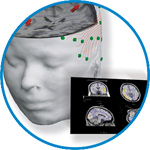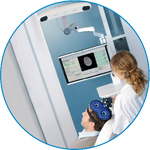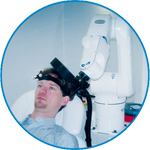- Home
- About ANT
-
Products

asa
asa is a highly flexible EEG/ERP and MEG analysis package with a variety of source reconstruction, signal analysis and MRI processing features.
.jpg)
eego mylab
The new frontier in multimodal brain research. With up to 16 kHz sampling rate, 256 EEG channels and unique software features, eego mylab gives you an unprecedented in-depth understanding of the human brain.

eego sports
eego sports offers complete freedom to collect high-density EEG data, bipolar EMG signals, and a variety of physiological sensor data, wherever and whenever required, with publish quality data in less than 15 minutes!

waveguard net
The waveguard net sets a new standard for research applications requiring high-density EEG data acquisition with quick preparation time, high flexibility, and subject comfort.

visor2
Our new and upgraded visor2 solutions integrate all the latest technologies for navigated rTMS, dual-coil navigation support, EEG-TMS recordings and pre-surgical evaluation for the highest quality in research and clinical procedures.

powerMAG ANT
The PowerMAG ANT 100 rTMS stimulator is designed for the specific needs of high-end TMS applications. Powerful high-frequency TMS as well as high precise single pulse and repetitive pulse protocols are combined in one single device.

xensor
xensor offers the solution for digitization of 3D electrode positions. xensor takes care of the whole procedure; it records, visualizes and stores positions acquired with a dedicated digitizer.

waveguard original
waveguard original is the cap solution for EEG measurements compatible with fMRI, MEG and TMS system. Use of active shielding guarantees performance in even the most demanding environments.

waveguard connect
waveguard connect EEG caps are a perfect match for hospitals and institutes aiming at reliable EEG, maximum uptime and great patient comfort! For optimal signal quality, the electrodes are made of pure, solid tin.

waveguard touch
waveguard touch is a dry electrode EEG cap. The unique Ag/AgCl coated soft polymer electrodes provide stable, research-grade EEG signals while maintaining subject comfort. The combination of these innovative dry electrodes and the industry-leading waveguard cap makes waveguard touch the best solution for dry EEG.

smartmove
smartmove allows planning of a complete TMS session ahead by defining stimulation sites based on anatomical MRI information and functional information like fMRI, PET or EEG/MEG.
Stay - References
- Support
- Events
- News
- Contact Us
You are here
3D source localization derived from subdural strip and grid electrodes: A simulation study
3D source localization derived from subdural strip and grid electrodes: A simulation study
Little experience exists in the application of source reconstruction methods to recordings from subduralstrip and grid electrodes. This study addressed the question, whether reliable and accurate 3Dsourcelocalization is possible from the Electrocorticogram (ECoG).
Methods
The accuracy of source reconstruction was investigated by simulations and a case study. Simulated sources were used to compute potentials at the electrode positions derived from the MRI of a patient with subdural electrodes. Used procedures were the linear estimation (minimum norm) algorithm and the MUSIC (MUltiple SIgnal Classification) scan.
Results
Maxima of linear estimation were attracted to adjacent electrodes. Reliable localization with alocalization error ⩽15 mm was only achieved for about 35% of the original source positions. Maxima of the MUSIC metric were identical to original positions for simulations without noise. Noise reduced the percentage of reliable solutions down to a 79.0%. Electrode contacts distant to the source had small influence on localization accuracy. The case study supported simulation results.
Conclusion
Reliable source reconstruction derived from ECoG can be achieved by the application of the MUSIC algorithm. Linear estimation needs additional compensation mechanisms.
Significance
MUSIC based 3Dlocalization based on ECoG has the potential improving epilepsy diagnosis and cognitive research.

 Read more
Read more.jpg)




